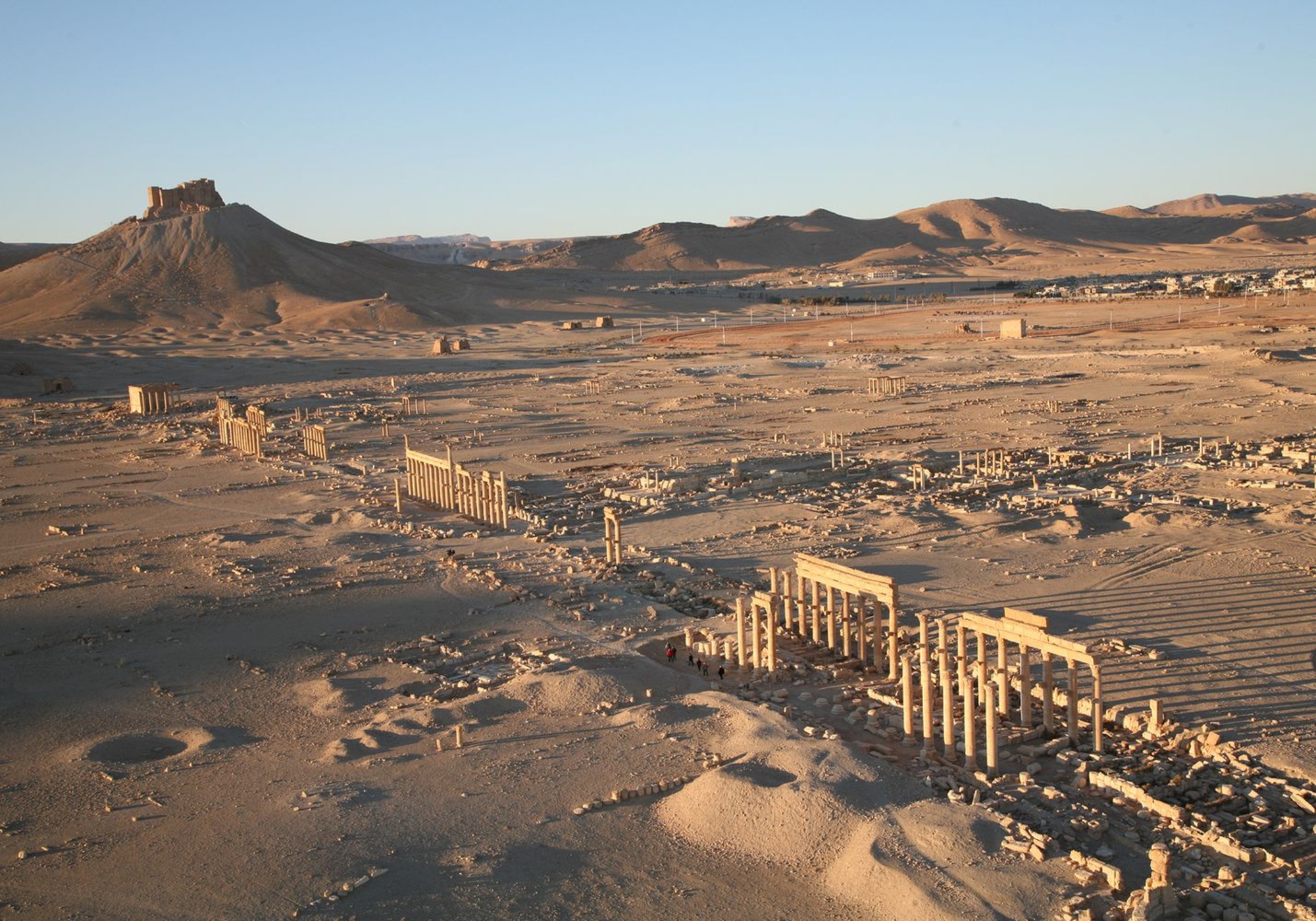- Accueil
- An Oasis: Environment and Climate
- An oasis: environment and climate
At the junction of two mountain ranges and a small plain sloping towards it, the oasis of Palmyra lies roughly halfway between the Mediterranean coast and the Euphrates valley.
An arid steppe
Established in the arid steppe, Palmyra receives an average of 150 mm of rain (with strong variations depending on the year), which is not enough to practice dry agriculture. Cold in winter (it snows regularly), the oasis has a very long summer without any rainfall from April to October, with maximum temperatures often exceeding 40°C from June to August.
Water resources in the middle of the steppe
Thanks to the waters that gather there, those of rare winter rains and those of two springs, it offers the possibility of irrigated crops (at least in the areas where salt does not rise) while the surrounding massifs allow the herds of camels and sheep to graze a good part of the year.
Palmyra is located at the limit of fruiting of the date palm but also hosts many fruit trees (pomegranate, olive, fig) and an irrigation system allows the development of gardens on vast areas. These favorable conditions no doubt explain why man settled in the region as early as the Paleolithic period, and even more so in the Neolithic period.
The site of Palmyra itself, located at the confluence of two wadis (the largest of which crosses it from west to east), is in contact with water resources and the best cultivable soils.
